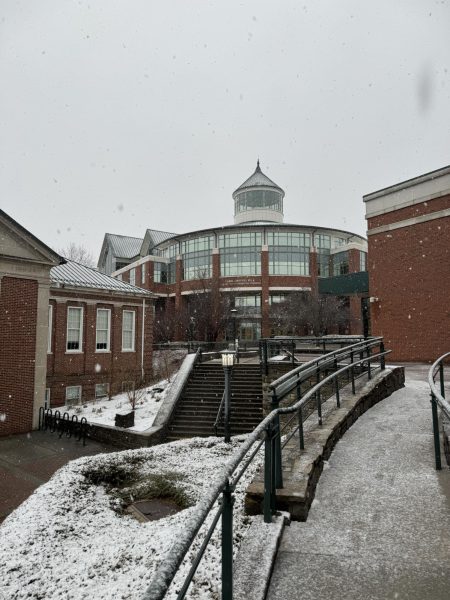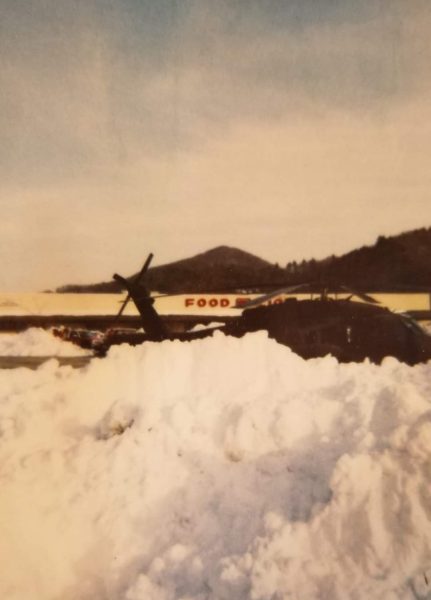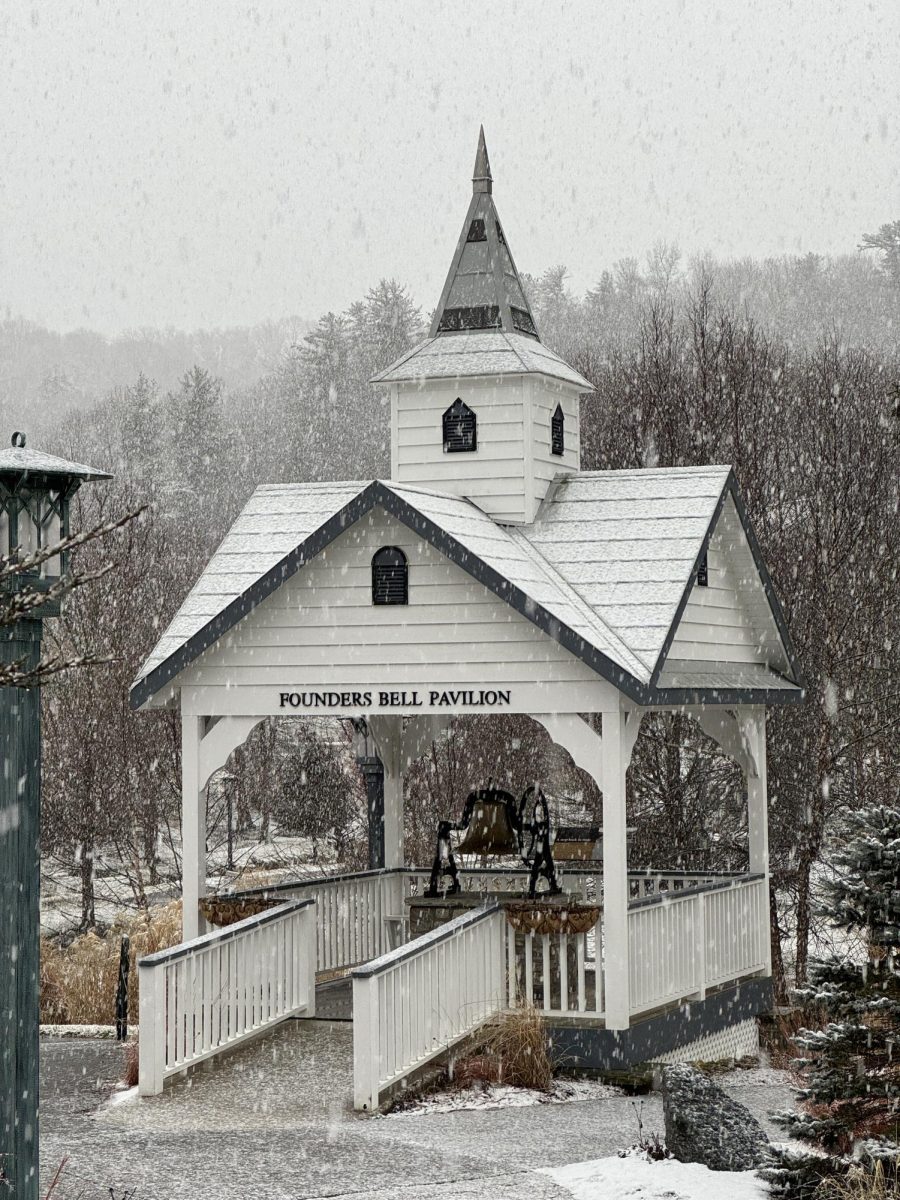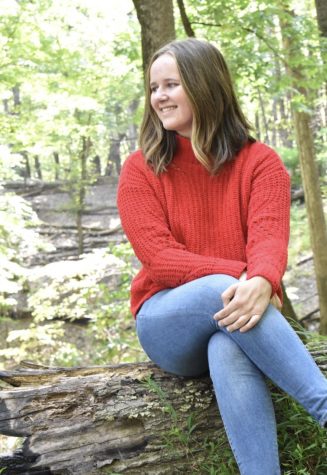Already this spring semester, students have woken up to snowfall on multiple days, resulting in class delays or cancellations. However, the inches of snow from this semester fail to compare to one specific week in App State’s history, when from March 15-19, 1993, App State experienced a snowstorm that would cancel classes for five straight days and later be referred to by media outlets as “The Storm of the Century.”
The Appalachian reported on the storm, headlining its paper “Blizzard of ‘93 extends break.” News Editor Suzi Landis cited it as the longest class cancellation in App State’s history. The blizzard caused Boone to receive 2-3 feet of snow and cost App State approximately $30,000, or approximately $64,000 in today’s dollars when inflation is factored in, according to a 1993 issue of The Appalachian.
Most students were away from campus during the blizzard on spring break, but an estimated 160 students remained on campus, according to The Appalachian’s report.

With students spread throughout the state and country, contacting each student regarding the cancellation of classes proved to be difficult in the age before cell phones and social media.
In an effort to notify students of the hazardous weather, App State’s news bureau director Speed Hallman reached out to major North Carolina news outlet and notified the Associated Press of the closure to inform out-of-state students.
Students who called in asking whether or not classes were canceled were told that classes would remain canceled until Thursday. However, App State officials later decided to cancel Thursday and Friday classes in anticipation of the fact that Boone was not ready for App State’s students to return because roadways were still being cleared. This caused some confusion, resulting in some students attempting to return early, The Appalachian reported.
University officials, including App State’s chancellor, provost and vice chancellor met before the blizzard hit Boone to discuss options regarding the campus closure. The following day, it was decided to cancel classes, extending spring break by a week. The university remained open, however, and crews worked around the clock to clear the snow, The Appalachian reported.
Kevin Barney graduated from App State in 1993 and was living in Boone off-campus when the storm hit. Barney and one of his friends visited Cancún, Mexico during spring break and returned to Boone before the blizzard hit.
Barney said in a recent interview that he woke up to 2.5 feet of snow and no electricity.
He later called another friend who lived about 10 minutes away who had oil heating. Barney made the journey to his friend’s house and remained there for approximately a week with 10-11 other students.
“The oil heat for the furnace started to get low,” he said. “The last four days, none of us are taking showers.”
Barney said he and the other students had to use a small fireplace as a source of heat, using wood that a neighbor gave to them to keep warm.
For supplies, the students trekked to a small store that was open and lived off of “bread, bologna and beer” for a week.

Toward the end of the week, Barney said he and the students who were still staying over ventured out to the mall in search of open restaurants and witnessed a helicopter land in the parking lot.
“A state trooper gets off with a guy in a suit,” he said. “So imagine six college students standing outside of a car of the Boone Mall, and this guy walks up to us and goes, ‘Y’all okay? Would you like to meet the governor?’”
Barney said Governor Jim Hunt visited the town of Boone after the blizzard when helicopters were delivering supplies by air.
“We hadn’t taken a bath in days,” he said. “We were just holed up by a fire. We smelled like firewood.”
Another App State alum who witnessed supplies being delivered via helicopter was
Cheryl Shatterly, who was a freshman living on campus in the dorms during the storm.
Shatterly worked at the local Food Lion where supplies were being loaded onto helicopters and dropped off to Boone residents who could not make it into town for supplies. She recounts running into the store, grabbing the store’s Polaroid camera and snapping a photo of a helicopter.
“They actually had the military helicopters land in the parking lot, come inside the store, make the purchases, and prepare them for airdrop,” she said.
Shatterly said she doesn’t recall losing power in her dorm, but said she was snowed in for a couple of days.
The Appalachian’s March 25, 1993 print edition was filled with columns and articles related to the snow and closures. It was reported that the winter weather lowered crime rates and postponed the SGA elections. As assistant commentary editor Brian Winkler wrote in his column, the entirety of Boone was “closed.”





James B Eubanks • Feb 28, 2024 at 9:39 pm
Ahh – the good ole days! I remember this well as I was snowed in for almost 2 weeks. It took me 4 days just to dig my car out, and on the 5th day, I went to the store for the small neighborhood where I lived (despite there being a curfew in place).
At the time I was the Intramural Sports Coordinator. Traditionally, we started intramural softball after Spring Break and knew that we would have to the delay the beginning of the season. As they were clearing the campus of 3 feet of snow, I began to wonder where they were taking all of this snow from campus. As it turns out, they dumped it all on the intramural fields! Needless to say, the delay to the beginning of the softball season was delayed until mid-April!